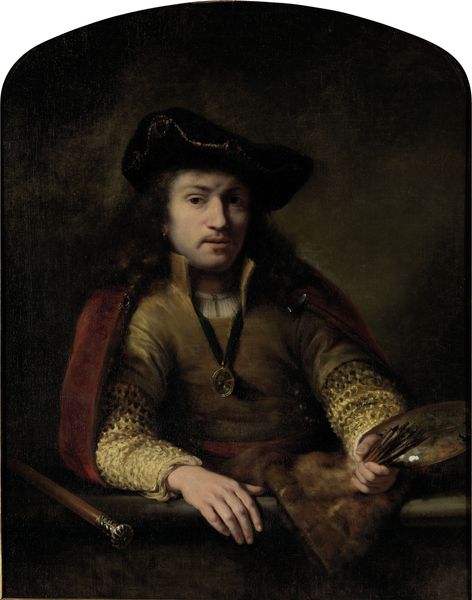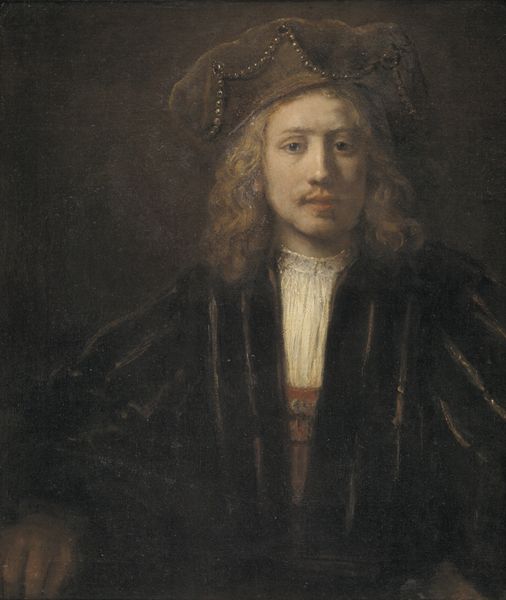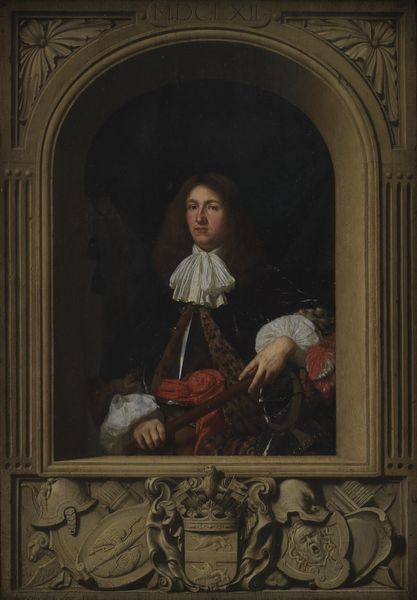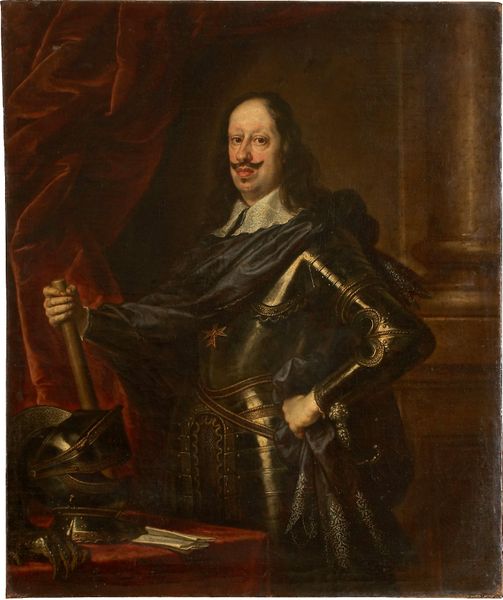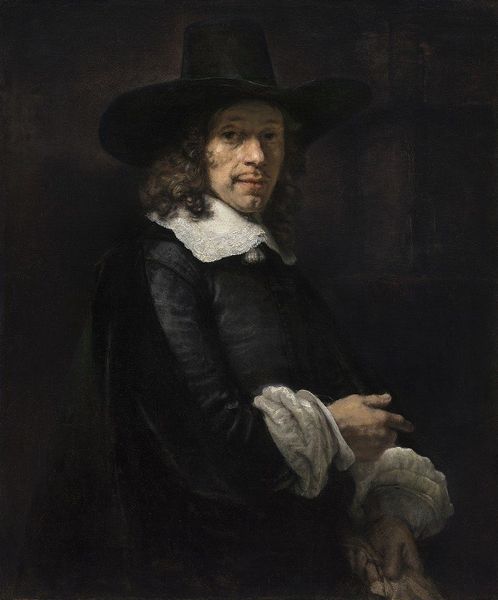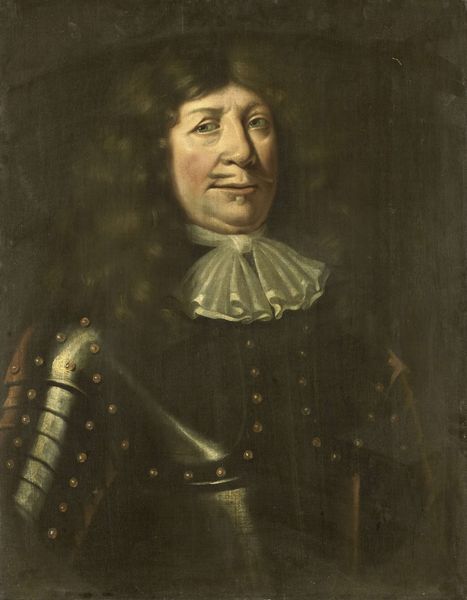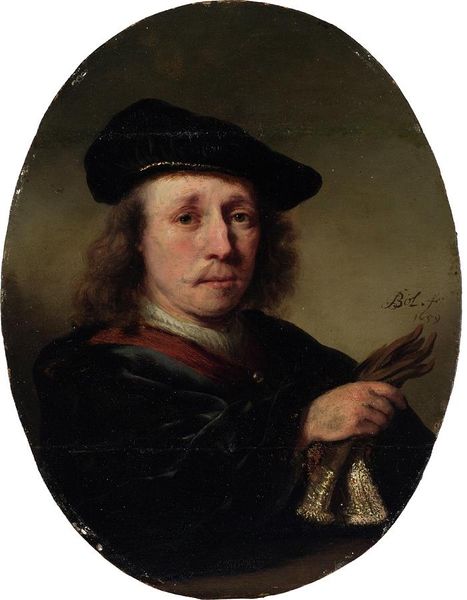
painting, oil-paint
#
portrait
#
figurative
#
baroque
#
portrait
#
painting
#
oil-paint
#
figuration
#
genre-painting
Copyright: Public Domain: Artvee
Curator: Before us stands Rembrandt van Rijn’s "The Standard Bearer," dating from 1654. Editor: Right off, I’m hit by how…present he is. Like he's just stepped out of the shadows of history with that flag – more like a prop, really – and into this very room. Curator: The formal structure invites that intimacy. Note how Rembrandt uses chiaroscuro—a stark contrast between light and dark—to pull the figure forward. The face and the ornate sash are bathed in light, while the background melts into obscurity. It’s a sophisticated theatrical device. Editor: The light’s not just theatrical; it feels like it's breathing life into him. He's got this sort of… knowing look, like he's seen things, hasn’t he? Almost conspiratorial. I mean, look at those weary eyes. Curator: Rembrandt masterfully employs impasto—thick applications of oil paint—to build texture and form. Observe the layering around the eyes and mouth; it's this meticulous construction that conveys the psychological depth you’re picking up on. Editor: The composition itself seems a bit… off-balance. Like he's tilting toward us, about to share some long-lost secret. Curator: The slight asymmetry is crucial. It disrupts the formality typical of portraiture, inviting dynamism and, indeed, a sense of narrative possibility. The pole bisecting the space, adds an element of Baroque tension. Editor: I get a strong sense of resilience, you know? Like he’s weathered some storms. There's a nobility there, but also… vulnerability? Curator: Precisely! The Standard Bearer becomes less a representation of military might and more a meditation on human experience. It resonates precisely because of that emotional honesty— achieved, of course, through technical brilliance. Editor: It’s funny, isn't it? The way a painting can whisper stories across centuries? I could stare at him for hours and still discover new tales in those shadows. Curator: Yes, and by analyzing those techniques closely we unlock more perspectives through time. "The Standard Bearer," then, remains a resonant symbol not only of its historical moment but also of enduring artistic innovation.
Comments
No comments
Be the first to comment and join the conversation on the ultimate creative platform.

